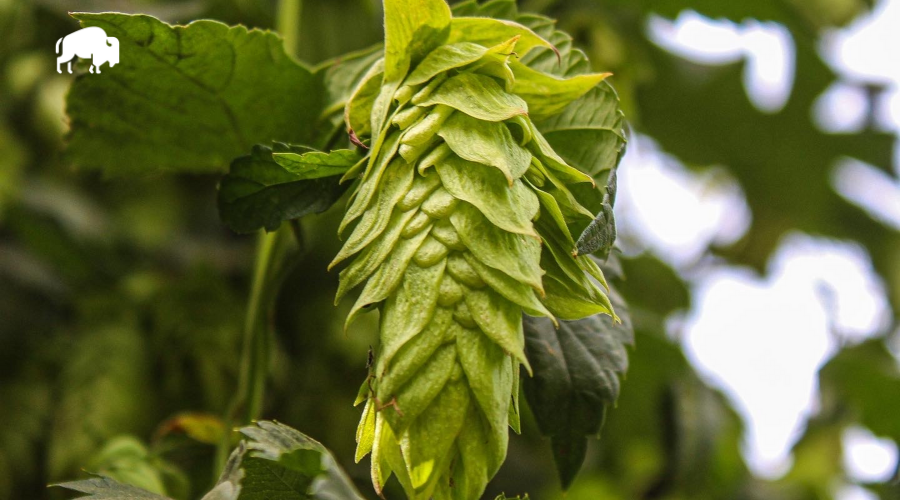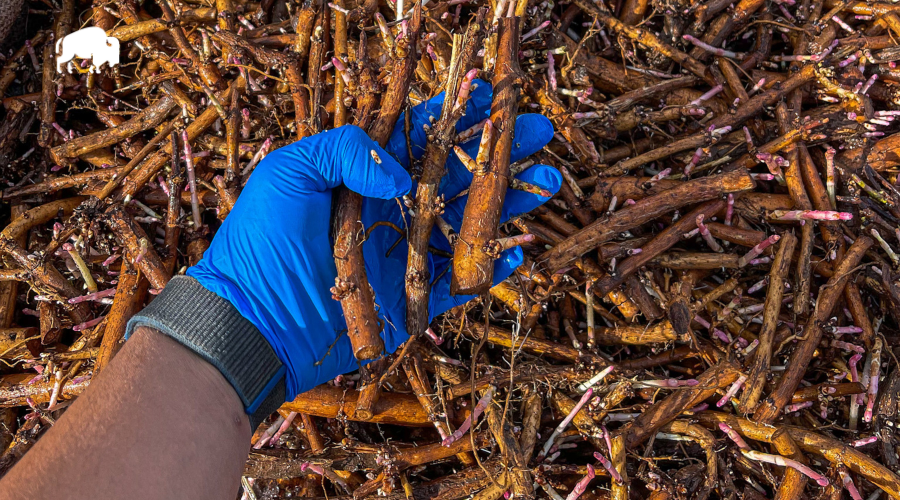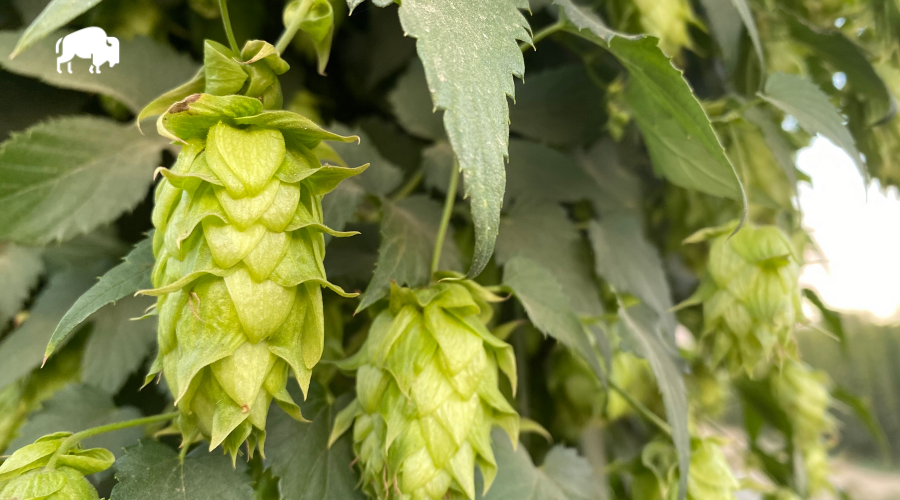With hundreds of hop varieties, knowing which ones to grow at home can be challenging. Hops are part of the Humulus lupulus plant species, with varieties grown in North America, Europe, New Zealand, Australia, and many other regions.
The cones, or flowers of hops, contain lupulin, which is used to flavor beer and contains several types of acids for bitterness. Different hop varieties fulfill specific roles, from providing aromatic notes like citrus or stone fruit to delivering a balanced bitterness.

If you’re a homebrewer, beer aficionado, or just a gardener looking to add another plant to your portfolio, growing hops can be a rewarding experience. Determining your needs and goals for planting hops is essential before ordering rhizomes. This article will explore which varieties are best to grow at home and ensure you have a successful harvest.
Here are several questions to ask yourself before purchasing rhizomes:
- Are my hops being grown primarily for brewing or for landscaping purposes?
- Which aromas do I want to brew with?
- Do I need a variety with high, mid, or low alpha ranges?
- Does my location have ample sunlight?
- Does it rain a lot where I live?
Asking these questions beforehand can help narrow your search for varieties that meet your brewing needs or determine which varieties are best for your climate.
Several companies source rhizomes and plant materials available to purchase. Read The Complete Guide On How To Grow Hops for more information on growing hops.
Hop varieties can be split into two categories: alpha and aroma varieties. Alpha varieties typically have an alpha acid percentage of 10% or greater to provide beer with appropriate bitterness. Aroma varieties can have higher alpha acid contents but are primarily sought after for their specific aroma qualities.
Every hop variety also has a different cone and bine structure. Some cones are smaller and have a lighter-colored green hue. Other varieties are more luscious and can provide shade if you want to plant hops for non-brewing uses.
Hops are day-length sensitive, meaning that the number of daylight hours determines the growing cycle. The ideal regions for growing hops fall within the 35th and 55th parallel, where days can have up to 15 hours of sunlight. For growing hops at home, 6-8 hours is usually sufficient, though it is best to expose the plants to as many hours as possible.
Hops also need relatively warmer weather towards the beginning of the growing cycle and into the summer. Temperatures that cool down towards the end of the growing period in August and September help progress maturity.
Mostly, hops are relatively easy plants to grow at home but require a dry and sunny spot with plenty of space and an ample water supply. Choosing the right varieties depending on your location will make the growing process easier and allow you to have a successful harvest if that’s your goal.
The Classics
A group of hop varieties coined the “C Hops” are generally the best to start with regarding easiness to grow, aroma spectrum, and availability of plant material.

Cascade is a longstanding hop variety widely considered the easiest to grow because of its high yields, vigorous bines, and ability to perform well in many climates. It usually matures from late August to early September.
With aromas of grapefruit, spice, and floral notes, Cascade is most famously known for its use in Sierra Nevada Brewing’s Pale Ale and is considered one of the first craft hop varieties. This classic hop is a great starting point for new growers.
Chinook is another longstanding and robust hop variety that develops pine and citrus aromas. Luckily, it is a dual-purpose hop – 14-16% alpha acids – that can be used for both bittering and flavoring in beer. Maturing in mid-September, Chinook bines are luscious, and this variety works well in many beer styles, including IPAs, American Pale Ales, Lagers, and other Ales.
For those looking to plant a high alpha and high-yielding variety, look no further than Columbus, commonly referred to as CTZ. Alpha acids can reach nearly 20%, making it ideal for bittering.
Growers normally harvest Columbus towards the end of September as one of the last varieties. But if harvested a week to a week and a half earlier, aromas of red fruit, grapefruit, and tangerine zest develop, making it perfect for flavoring beer. Super-alpha varieties are the most robust and hardy, which is great for more difficult growing climates.
Perhaps the most challenging hop variety to grow of the “C Hops” is Centennial. This hop variety is susceptible to downy mildew, a mold that can develop if the area around the plant is continuously wet. If you live in a climate that experiences higher levels of precipitation, varieties like Cascade and Chinook are more resistant to mildew issues.
Centennial’s bright lemon and tangerine aromas with subtle floral notes have contributed to its popularity. Intense aromas coupled with high alpha acids make it highly versatile. If you choose to plant Centennial, give the plants ample water and sunlight for the best growing conditions.
New-Age “C Hops”
Many have heard of the classics like Cascade, Chinook, and Centennial. But two other varieties have also garnered some popularity in the beer scene: Comet and Cashmere.

Though Comet was released by the USDA in 1975, the variety has had a resurgence in recent years. What makes this an exciting variety to grow is its bine coloring. At the beginning of the growing cycle, Comet bines will present as lime green and slowly develop to the traditional dark green color similar to other varieties.
Most of the hop varieties with rhizomes available to purchase were released by the USDA because there are some regulations on privately bred varieties like Citra and Mosaic. However, many have commonly called Comet “Citra’s little sister.” Aromas of lime, mandarin, lemongrass, and pineapple provide a slew of citrus flavors to achieve a new-world aroma.

Another variety named Cashmere has also gained popularity for its strawberry jam, berries and cream, and stone fruit aromas. Released in 2013, Cashmere can be a tricky variety to grow but well worth it for its more nuanced aromas.
However, Cashmere bines are more susceptible to a disease called Drippy Stem Blight. The occurrence is still unknown and does not appear to affect the plants year-to-year. The disease can cause the leaves to wilt, resulting in a desiccated bine. There’s no known solution to this issue, so if you plant Cashmere, be aware.
Neomexicanus
Most of the varieties listed above have come from the USDA breeding program. Each one is a relative mainstay in craft beer. As brewers have evolved, so has the need for new and unique hops.
Another subspecies of hop plant is Neomexicanus, native to the Southwestern portion of the United States. Humulus neomexicanus hops are typically found in mountainous and desert landscapes. Hop varieties in this subspecies often do well in warmer, desert-like climates and require less water than traditional varieties.

Three main varieties – Amalia, Multihead, and Neo1 – each have unique aromas of citrus, stone fruit, and pineapple with an underlying earthiness and spiciness. Because they are accustomed to the shorter day length and desert climate, these make great varieties for those planting in locations further south, such as Southern California and throughout the Southwest.
Other great options for hop varieties to grow at home:
- Nugget: This longstanding variety can grow well even in poor soil conditions and produce a large, vigorous bine. High resistance to powdery and downy mildew makes it another excellent option for wetter climates.
- Willamette: Released in the 1970s, Willamette is well-known for its spicy and floral aromas with an underlying earthiness.
Final Thoughts
Whether you’re a homebrewer, gardener, or beer lover, hop plants can provide a unique and rewarding growing experience. Understanding your specific goals and requirements, such as brewing or landscaping purposes, desired aromas, and alpha acid ranges, will help you choose which hop variety is best for you.

